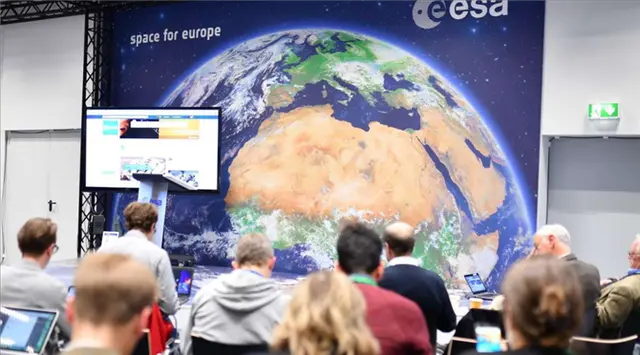Mission controllers were anxiously awaiting confirmation Wednesday that a tiny European craft had landed on Mars as part of an ambitious quest with Russia to find evidence of life on the Red Planet.
The paddling pool-sized “Schiaparelli” lander was due to end its seven-month, 496-million-kilometre (308 million-mile) trek from Earth with a dangerous dash for the surface through the Martian atmosphere.
Its Trace Gas Orbiter (TGO) mothership, meanwhile, was on its own hairy mission to enter the Red Planet’s orbit, at a distance of some 175 million kilometres from Earth.
Confirmation that both manoeuvres were correctly executed is not yet in.
“So far everything is going well,” flight director Michel Denis said at the European Space Agency (ESA) mission control centre in Darmstadt on Wednesday afternoon.
A direct signal from Schiaparelli to a radio telescope based in India was lost, but ground controllers in Darmstadt, Germany, stressed this was no indication of trouble.
The signal was always very faint, contained no information about the lander’s health or progress but was “nice to have”, said ESA spacecraft operations manager Andrea Accomazzo.
“Currently we are not receiving any single radio signal from Mars,” he said after the scheduled landing time. “But this is absolutely nominal.”
Controllers will only know what is really going on once signals from the craft are received via ESA and NASA satellites in Mars’ orbit, some time after 1630 GMT.
Schiaparelli is a trial run of atmosphere entry and landing technology for a larger and more expensive rover that will follow it to the Martian surface in a few years.
It had been free-falling to the surface since Sunday, when it separated from the TGO.
The test lander woke up, as scheduled, minutes before it was due to arrive at Mars’ atmosphere at 1442 GMT, the ESA said.
Schiaparelli’s main job is to test entry and landing technology for the planned rover -- the second phase and high point of ExoMars.
The TGO, in turn, is charged with sniffing atmospheric gases potentially excreted by living organisms -- however small or primitive.
While life is unlikely to exist on the barren, radiation-blasted surface, scientists say traces of methane in Mars’ atmosphere may indicate something is stirring under the surface -- possibly single-celled microbes.
The TGO orbiter started a 139-minute engine burn as scheduled on Wednesday to slow it down enough to be captured by Mars’ gravity, the ESA said.
The TGO’s science mission will only start in early 2018, once it has changed its initial eccentric orbit into a more circular one at an altitude of 400 kilometres.
Schiaparelli’s experiences Wednesday will be used to inform technology for the ExoMars lander, set for launch in 2020 after a two-year funding delay.
A discardable “aeroshell” will protect the 600-kilogramme (1,300-pound) craft against a heat of several thousand degrees Celsius generated by friction as it passes through Mars’ thin, carbon dioxide-rich atmosphere.
After a few minutes, a supersonic parachute and nine thrusters will brake its fall. A crushable structure in the lander’s belly is meant to cushion the final impact.
Powered purely by onboard batteries, Schiaparelli will stay online for two or three days, sending home vital rover-design data.
A message from Mars will take about 10 minutes to reach Earth.
Since the 1960s, more than half of US, Russian and European attempts to operate craft on the Martian surface have failed.
ExoMars is Europe’s first attempt at a Mars rover since the British-built Beagle 2 disappeared without trace in 2003 after separating from its mothership.
The new rover will be equipped with a drill to seek for life clues up to a depth of two metres.
(SCMP)
 简体中文
简体中文

